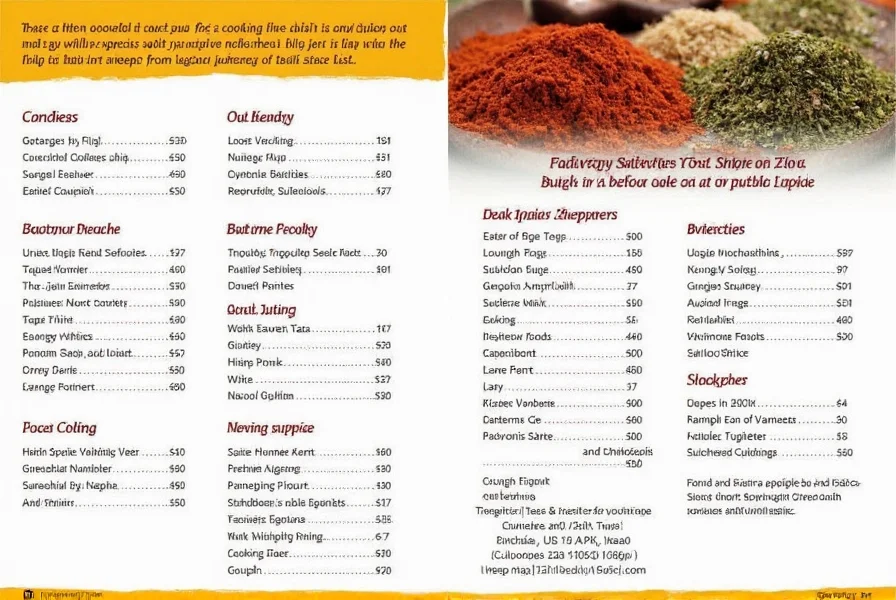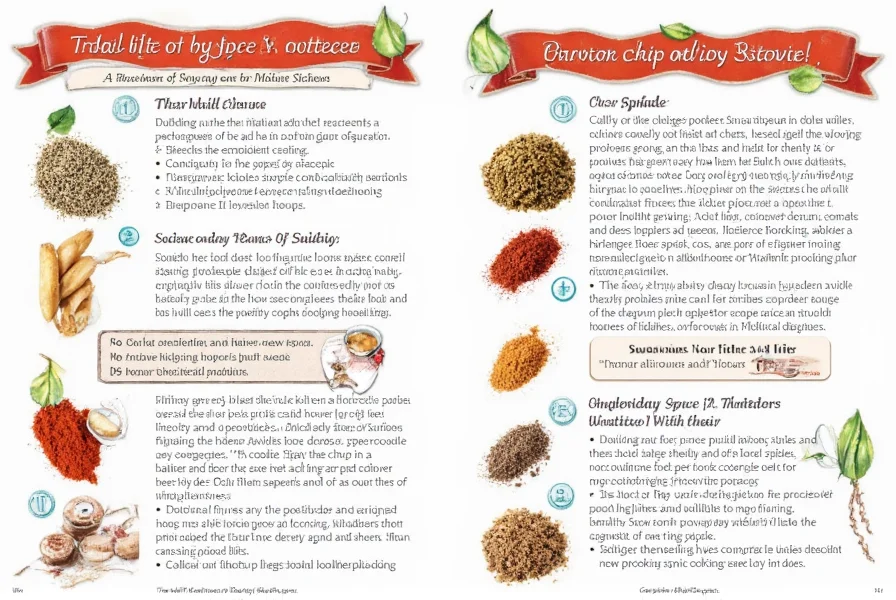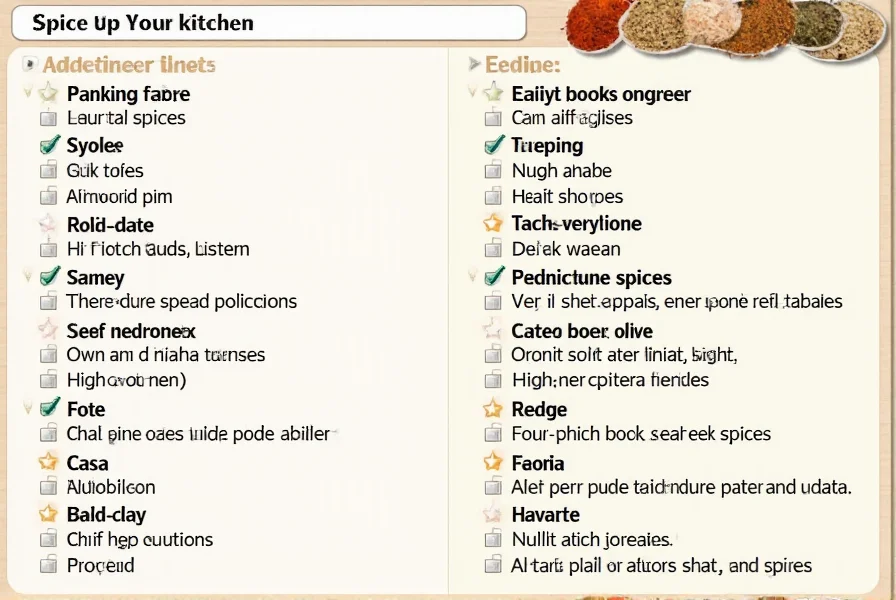Table of Contents
Essential Spices Every Home Cook Should Know
When building your spice collection, focus on these core spices that form the foundation of global cuisines. These 8 essential spices deliver maximum versatility for home cooking:
- Cumin: Earthy and warm, essential for Mexican, Indian, and Middle Eastern dishes. Toast whole seeds before grinding for deeper flavor.
- Paprika: Adds vibrant color and smoky sweetness. Use sweet paprika for general cooking, smoked for BBQ dishes, and hot paprika for spice lovers.
- Oregano: Woody and slightly bitter, the backbone of Italian and Mediterranean cooking. Use dried for sauces, fresh for salads.
- Ginger: Zesty and pungent. Fresh ginger adds brightness to stir-fries, while ground ginger works in baking and curries.
- Garlic Powder: Convenient alternative to fresh garlic. Perfect for rubs, marinades, and seasoning roasted vegetables.
- Coriander: Citrusy and floral. Essential in Indian curries, Middle Eastern blends, and Mexican salsas.
- Cinnamon: Sweet and aromatic. Use Ceylon cinnamon for delicate desserts, Cassia for robust baked goods and savory dishes.
- Black Pepper: The most versatile spice. Freshly cracked pepper enhances almost any savory dish.

Understanding Flavor Profiles of Common Spices
| Spice | Flavor Profile | Best Applications |
|---|---|---|
| Cumin | Earthy, nutty, slightly smoky | Mexican chili, Indian curries, Middle Eastern spice blends |
| Paprika | Sweet, smoky, or spicy (varies by type) | Rubs for meats, tomato-based sauces, Hungarian goulash |
| Oregano | Woody, peppery, slightly bitter | Italian pasta sauces, Greek salads, roasted vegetables |
| Ginger | Zesty, spicy, citrusy | Asian stir-fries, Indian curries, gingerbread, teas |
| Coriander | Citrusy, floral, slightly sweet | Curries, marinades, breads, spice rubs |
How to Use and Store Spices Properly
Proper storage and usage techniques preserve spice potency and maximize flavor:
- Storage Essentials: Keep spices in airtight glass containers away from heat, light, and moisture. A cool, dark pantry is ideal—never store above the stove.
- Whole vs Ground: Whole spices (cinnamon sticks, cumin seeds) retain freshness 2-3x longer than ground versions. Grind whole spices just before use for maximum flavor.
- Testing Freshness: Rub a small amount between fingers—if aroma is weak or absent, replace it. Ground spices typically last 6-12 months, whole spices 1-2 years.
- Toast for Depth: Dry-toast whole spices in a pan before grinding to unlock complex flavors (especially cumin, coriander, mustard seeds).
- Layering Flavors: Add hardy spices (cumin, cinnamon) early in cooking to allow flavors to develop. Add delicate spices (oregano, paprika) toward the end to preserve freshness.

Frequently Asked Questions About Cooking Spices
How many spices should a beginner start with?
Begin with 5-7 core spices: black pepper, cumin, paprika, oregano, garlic powder, cinnamon, and ginger. These cover most global cuisines and can be used in countless recipes. Expand your collection gradually as you explore new dishes.
What's the difference between herbs and spices?
Herbs come from leafy parts of plants (basil, parsley, oregano) and are often used fresh. Spices come from seeds, roots, bark, or flowers (cumin, cinnamon, ginger) and are typically dried. Herbs are usually added toward the end of cooking, while spices benefit from longer heat exposure.
How can I tell if my spices are still fresh?
Check aroma: rub a pinch between fingers—if scent is weak or absent, replace it. Visual test: vibrant color indicates freshness. For ground spices, sprinkle in hot oil—if they don't sizzle and release aroma within seconds, they've lost potency.
Which spices are most versatile for different cuisines?
Cumin, paprika, garlic powder, and cinnamon are the most versatile. Cumin works in Mexican, Indian, and Middle Eastern dishes. Paprika enhances European, American, and Latin American recipes. Garlic powder is universal for savory dishes. Cinnamon bridges sweet and savory applications across cultures.
How should I store spices to keep them fresh?
Store in airtight glass containers away from heat, light, and moisture. A cool, dark cabinet is ideal—never above the stove. Label containers with purchase dates. Replace ground spices every 6-12 months and whole spices every 1-2 years. Avoid refrigeration to prevent moisture buildup.
Pro Tips for Using Cooking Spices
- Start with small quantities: When trying new spices, begin with 1/4 teaspoon and adjust to taste.
- Build flavor layers: Add spices in stages—hardy spices (cumin, cinnamon) early, delicate spices (oregano, paprika) toward the end.
- Pair complementary flavors: Cumin + coriander for curries, paprika + garlic for rubs, cinnamon + nutmeg for baking.
- Toast whole spices: Dry-toast cumin, coriander, or mustard seeds in a pan for 1-2 minutes before grinding to intensify flavor.
- Keep a spice journal: Record which spices you use and how they affect your dishes to refine your recipes over time.











 浙公网安备
33010002000092号
浙公网安备
33010002000092号 浙B2-20120091-4
浙B2-20120091-4